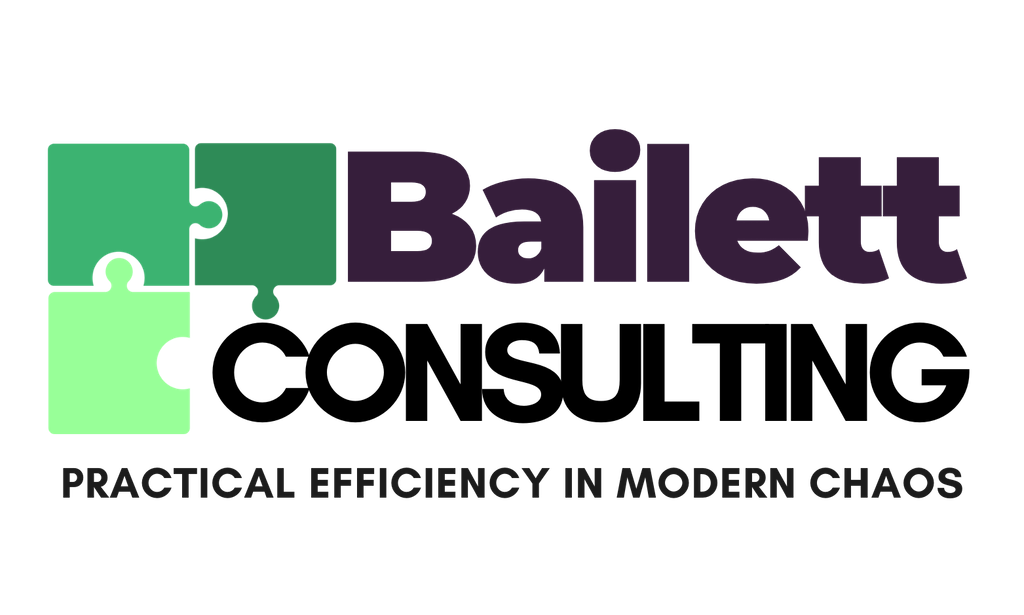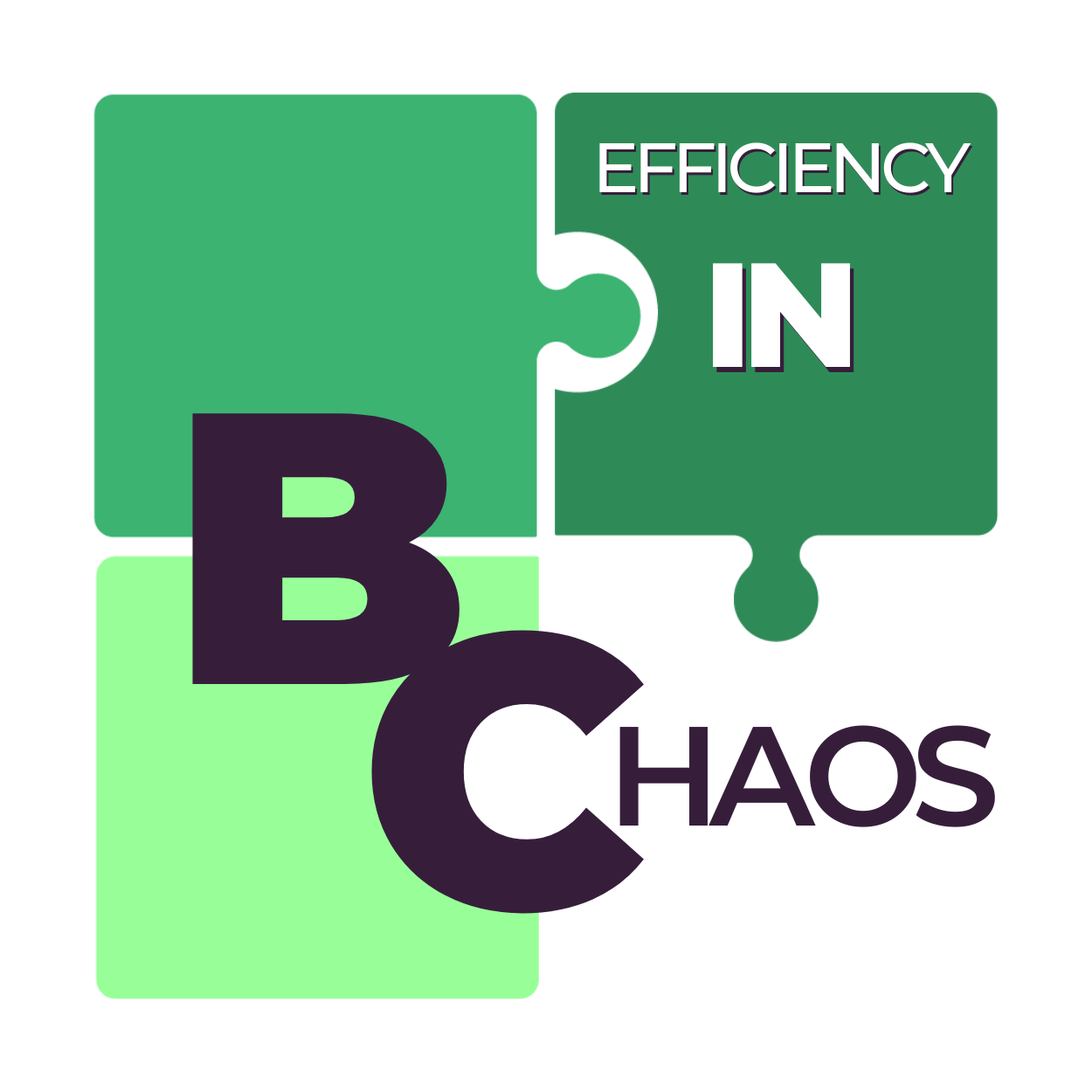Streamline Your Day. Simple Ways to Reduce Chaos & Maximize Efficiency.
We have all had those days that feel chaotic from the moment we wake up until the second we go to bed. Emails pile up, unexpected tasks pop out of nowhere, and our to do list becomes more overwhelming with each passing hour. The good news is, chaos does not have to define your day. By implementing a few simple processes, you can streamline your workflow, reduce stress, and create space for what truly matters.
Here are practical steps to take control of your day and maximize efficiency.
1. Start with an Evening Routine That Sets the Tone
Chaotic days often begin with rushed or disorganized mornings. A well structured evening routine sets you up for a productive and stress free day ahead. Instead of rushing in the morning, taking time the night before to prepare can make all the difference. Preparing the night before helps you start the day with clarity and purpose. Here’s how you can do it:
Plan
Designate a time each evening to plan for the next day.
Example: 8 PM to review your schedule and prepare needed items.
Sticking to a set time helps create a consistent habit.
Review your calendar:
What meetings or appointments do you have?
What items do you need to bring with you?
Check the weather:
Ensure you have the right clothing and accessories for the conditions.
Gather any needed raincoats, umbrellas, or extra layers in advance.
Draft a success list:
Identify three priority tasks for the following day that would make it feel productive.
Prepare
Gather all necessary clothing for the next day:
Include undergarments, outfit pieces, shoes, and accessories.
Pack food if needed:
Prepare breakfast, lunch, snacks, or dinner ahead of time.
Charge and pack electronic devices:
Ensure your laptop, phone, and other essential devices are charged and ready.
Organize any necessary bags:
Place work documents, purses, or briefcases in a designated spot.
Stage
Create a designated staging area for all the items you have prepared.
Clothing: Lay out in a convenient spot, possibly outside the bedroom if you wake up earlier than a partner.
Jewelry & Accessories: Keep them with or near your clothing selection.
Food: Store pre-packed meals in a specific section of the fridge (e.g., top shelf, left side) for easy grab and go access.
Work Essentials: Place laptops, bags, and lunch containers near the door you walk out each morning.
Weather Related Items: Keep umbrellas, gloves, or extra layers in your staging area so everything is remembered.
Evening Technology Tips
Set Timers:
If you read, scroll social media, or play games at night, set a timer to prevent staying up too late.
Reduce Blue Light Exposure:
Enable blue light reduction settings on your phone and TV or use sleep mode.
Turn Off Notifications:
Silence all audible and visual notifications on electronic devices.
If needed, use the “Do Not Disturb” feature to minimize distractions while you sleep.
Why It Works:
By incorporating an evening routine using these steps you will feel more prepared for each day. Long term implementation of an evening routine can increase the feeling of control, reduce stress, and increase your daily productivity. An evening routine can even decrease overall decision fatigue and reduce the opportunity to forget something you need for the day.
2. Create a Daily Workflow
Prioritize Three Tasks: Identify the top three tasks that absolutely must get done today. (Can do this the night before during the evening routine.)
Break Tasks Down: Reduce tasks to the ridiculous by breaking them down into the smallest actionable steps.
Batch Tasks: Group similar tasks into categories or themes to improve efficiency.
Use Productivity Techniques: Focus on completing your top three items by leveraging proven strategies like time blocking, the Pomodoro Technique, The Flowtime Technique, or unitasking.
Why It Works
Creating a daily workflow allows you to work efficiently to maximize your productivity on the items most important to help you reach your goals. A daily workflow allows you to prioritize you and your time.
3. Build Templates for Repetitive Tasks
Repetition is a major time waster. If you find yourself doing the same type of task over and over, creating templates can save you valuable time and energy.
Examples:
Email Responses: Draft templates for common inquiries, like scheduling meetings, meeting reminders, or answering FAQs.
Reports or Presentations: Use standardized branded templates that you can quickly customize.
Daily Checklists: Create a reusable list for routine tasks, such as daily tasks, end of day wrap ups, or weekly planning.
Why It Works:
Templates reduce the mental effort required to start repetitive tasks. When these items are templated you are not required to remember everything. This will free up your brainpower for more strategic work.
4. Eliminate Distractions Before They Happen
Distractions are a productivity killer. A ringing phone, endless notifications, or a cluttered workspace can quickly derail your focus. Take proactive steps to minimize interruptions before you dive into work.
How to Do It:
Silence Notifications: Turn off all phone and email alerts during focused work periods.
If you have children or others you are caring for the Do Not Disturb Function would work also.
Declutter Your Space: Keep your desk clean and organized to reduce visual distractions.
Set Boundaries: Let coworkers, family, or others that live with you know when you need uninterrupted time. Set the expectation of how long you will be unavailable and ask them to write down questions they have or stories they want to tell. This way they remember what they wanted when you are available again.
Why It Works:
A distraction free environment allows you to work with greater focus and efficiency, reducing the time it takes to complete tasks.
5. End Your Day with a Daily Wrap Up
Finishing your day with intention helps you reflect on your accomplishments and prepare for tomorrow. A simple daily wrap up routine ensures nothing falls through the cracks and gives you peace of mind as you transition out of work mode.
How to Do It:
Review Your Day: Check off completed tasks and note any unfinished ones that will be at the top of tomorrow’s list.
Organize Your Space: Tidy up your desk or workspace to start fresh the next day. Make your space clean and organized in a way that you can sit right down and start working the following day.
Plan Tomorrow’s Top Tasks: Identify your top 3 tasks for the following day and schedule them. Be sure to add any lingering task as the number one item to complete the following day.
Why It Works:
Ending the day organized reduces stress and sets you up for success the next morning. It also allows you to clear your brain to be present in the activities that occur after you leave work.
Streamlining your day is the secret sauce for long term success. By incorporating the suggestions listed above you can significantly reduce chaos, reclaim control over your time, and increase your productivity.
Start small by choosing one or two strategies from this list and begin to implement them. As these strategies become habits, you will notice how much smoother and more productive your days become. Remember, efficiency is not about doing more things. Efficiency is doing what matters most in the time we have without all the stress.
Want more useful and applicable tips?
Check out our Ask Danielle Video Series on YouTube.






